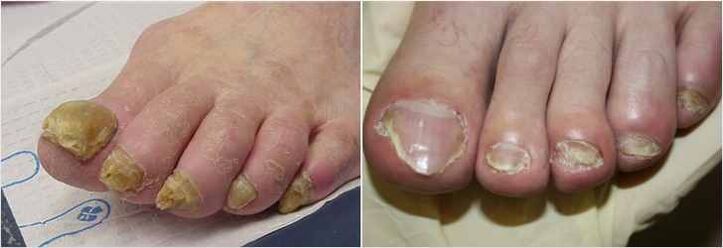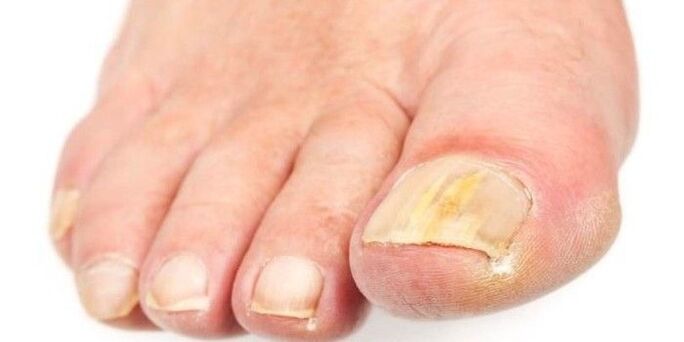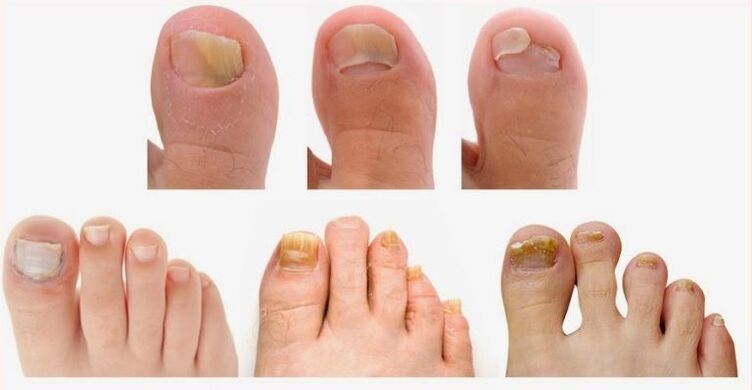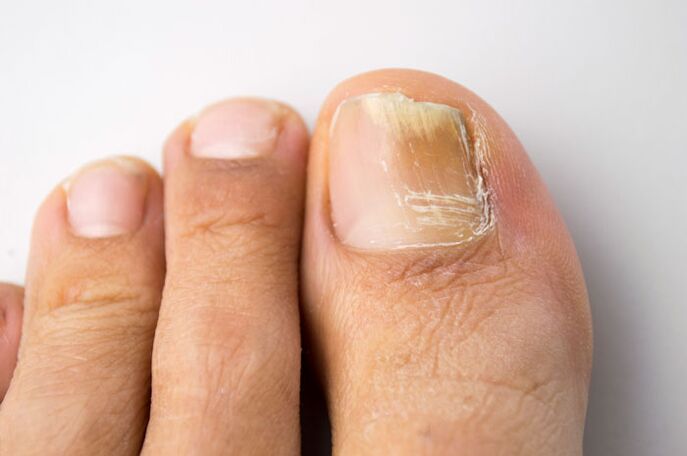Many changes in legs on their feet can make people feel they have a fungal nail infection, from a medical point of view, known as an omicom. Fungal nail infection sometimes makes the situation contagious or associated with bad hygiene. In fact, up to 10% of all adults have fungal nail infections. This percentage increases to 20% of adults aged 60 and over. In fact, nails abnormally search can be caused by a series of conditions, including, but not limited, fungal infections. There are many other reasons why nails may look different.

Healing nail fungus
OnihyComyCosis is a fungal infection, usually caused by a special type of fungi, known as a dermatophyte. Because most of these infections are relatively superficial, the current procedures seem to be working well. This is not the case, because the nail is relatively impenetrable. Examples of countries often be beamed for fungal nails include yellow, hemat, green nails (caused by pseudomonas bacteria), bone (usually associated with psoriasis), nail infection (steam injury) and late injuries.
What other conditions can be taken for fungal nails?
Here are some other conditions that can be instead of fungal nails:
Lines and reefs: They are common and can be considered normal. Can worsen during pregnancy. The large slot in the middle of the nail can be caused by injuries. Some can notice these changes after chemotherapy.
Senile nails: with age, nails become fragile and develop ridges and separation of nail layers at the end of the nail. To avoid this, special solutions and baths need to be used.
White or yellowish nails may appear due to onyholysis. This means separating the board from the nail base. Color which is the shape of the air under the nail. The treatment consists of briefly cutting the plate, not not to be cleaned below it and Poland. If you need to hide color, you have to wait two to three months. Constant onkelos can make nails susceptible to a fungal infection. Red or black plates due to hematoma or blood under the nail, as a rule occur from injury. If there is a black spot under the nail, which does not cause injuries, you should visit a dermatologist or orthopedic to make sure that this is not melanomac (skin cancer associated with pigmented cells). A simple biopsy can exclude malignancy (cancer).
Green plates can cause pseudomonas bacteria that grow under the nail, which is partially separated from the base of the nail. This infection can cause an unpleasant smell of nail. The treatment consists of brief cutting nails every four weeks, not clean, polish if you need to hide color and wait two to three months. It is also recommended that it avoids soaking plates in any water (and thoroughly dry the legs after bathing. If the problem has not disappeared, there are recipes for the treatment that is prescribed by psoriasis can also be brown.
Edem and redness of the skin around the nail are called Paronychia. This is the skin infection at the bottom of the nail (cuticle). If the infection is acute (has a quick start), it is usually caused by bacteria. It can react to warm baths, but it is better not to self-imported, but to visit the doctor immediately. Chronic Paranichia occurs when the cuticle is inflammation or irritated with time. Sometimes fungi will use damaged skin and infection. Therapy begins with the fact that the skin remains dry and excreted out of water. If the problem doesn't disappear, you should contact your doctor. Antibiotics are often not used, but can be needed with serious infection.

Chronic nail injuries can lead to nail damage, which can very much resemble fungal nails. Some injuries can cause permanent changes that can mimic the appearance of fungal nails. Microconidii Trichophyton fungus, who lives in soil and can lead to fungal skin infections, hair or nails.
What causes fungal infections and what are some risk factors?
In normal healthy people, fungal nail infections are most often caused by fungi, which belongs to wet areas. Communal showers, such as in gym or pools, joint sources. Loading nails using inadequate cleaning of tools (for example, connecting rods, fillets and baths) in addition to life with family members who have fungal diseases, are also risk factors. It has been proven that athletes are more sensitive to the nail fungal.
It is assumed that this is due to the fact that densely solid-appropriate, sweaty boots associated with the repetition of nail injuries on their feet. The presence of sports cargo makes it more likely that the fungus will infect your nails on your feet. The repetition violation also weakens the plate, which makes it more sensitive to fungal infection. They include everything that exacerbates the immune system can make a person prone to fungi infection. They include conditions such as AIDS, diabetes, cancer, psoriasis or adoption of any immunosuppressive, such as steroids.
Are fungal nails contagious?
Although the fungus should be obtained somewhere, it is not very contagious. It is so common to find more than one person in a family that has nothing more than random random cases. The mushroom can be transferred from person to person, but only with constant intimate contact.
What are fungal symptoms and nail signs?
Although fungal nails are usually cosmetic problems, some patients experience pain and discomfort. These symptoms can worsen with shoes, activity and irregular nail covering. There are many types of mushrooms that can affect nails. However, the most common, however, is called Trichophyton Rubum. This type of fungus tends to infect the skin (known as a dermatophyte) and is manifested in the following specific methods. It starts at the ends of the nail and raises the plate above: it is called "distal onychomicosis". This is the most common type of fungal nail infection in adults and children (90% of cases).

It is more common in toes, thumb is usually the first to affect. Risk factors include older people, swimming, sports loads, psoriasis, diabetes, family members with infection or depressive immune system. It usually begins as a colorless area on the corner of the thumb and spread slowly to cuticles. He often follows him onycholysis. The most common cause is T.
It starts at the foot of the nail and raises the nail upwards: it is called "proximal tetihchomicosis". This is the least common type of fungal damage (about 3% of cases). It looks like a distal type, but starts with a cuticle (base of the nail) and slowly spreads to the top of the nail. This species is almost always in humans with a damaged immune system. It is rarely possible to see fragments below the top of the nail with this condition, as opposed to distal sunny onychomicosis. The most common cause is mold T. rubrum and dermatophyte.
Yeast onnikmikoza: This guy causes a quasative name of Candida, not Trichophyton fungus, appointed above. This is more common in nails and is the common cause of fungal nails. Patients can be connected to a parony. Candida can cause yellow, brown, white or thickened nails. Some people who have this infection have fungi in their mouths or chronic paronichi), which is also infected with pores. White surface ONYCHOMICOSIS: In this state of the nail, the doctor can often clean the white powder on the upper part of the nail plate. This is the situation most often in a tropical environment and caused by well-known fungi and trichophytes.
What tests of health professionals are used to diagnose fungal nails?
It has been shown that only one physical examination is an unreliable method of diagnosing fungal nails. There are many conditions that can make nails look damaged and even doctors have a hard time. In fact, studies have shown that only about 50% - 60% of cases of abnormal appearance of nails caused by fungi. Therefore, laboratory tests are almost always aligned. Some insurance companies can even seek confirmation of the Laboratory Test for Diagnostics to cover antifungal medicine. The sample plate is obtained or cutting the nail or drilling holes in it. This piece is sent to the laboratory in which it can be painted, processed or tested by PCR (to identify the genetic body material) to identify the attendance of the fungus.
If the negative result of the biopsy follows the high clinical suspicion, for example, slabs that are buried, bleached, compacted, thickened and loose, requires another test due to the prevalence of false negative results in these tests. Most drugs used to treat nail fungus have side effects, so you should be introduced to contraindications.

What experts treat nail fungus?
There are several doctors that can ensure the treatment of nail fungus. A doctor who attends, a dermatologist or orthopedic can treat nail fungus. Any of these doctors can provide a suitable diagnosis and prescribe drugs specific to fungal infection. Orthopedic or dermatologist The upper layer of the nail can be shed away or even removed part of the nail.
What is the treatment of fungal nails needed?
The creams and other relevant drugs are traditionally less efficient than nail fungus than oral medicines. This is due to the fact that the nails are too complicated for the penetration of external applications. It is also difficult to adhere to local treatment schemes. Often these medications require daily applications for a period of up to a year to see the results. One of the main advantages of local treatment is the minimum risk of serious side effects and drug interactions compared to oral therapy.
Coral antifungal therapy operates in about 50-75% of cases, depending on the medicine. This can take nine to twelve months to make sure it worked or not, because it's how much you need to build a nail. Even when therapy operates, mushrooms can return to about 20-50% of cases. Currently, oral antifungal therapy is considered the best tool for treating fungi on their feet due to higher treatment rates and shorter treatment compared to local therapy.
There are several innovative treatment methods that are still checked:
- Laser therapy or photodynamic therapy Use the use of bright agents on the plate, and then the bright light of the corresponding wavelength on the nail.
- The use of electricity to absorb the relevant antifungal drugs in the nail: is also called iontofore.
- Using a special nail varnish that changes nail microclimate to make it inappropriate for the growth of the fungus: if it works, it can be a cheap way to treat this problem in the future.
One way to finally settle your nail fungus is an operation. Ondomicosis surgical treatment involves removing nails. However, this often provides only temporary relief, and relapse is common if additional antifungal medications (oral or local) are not used at the same time. However, surgical removal can be justified if it is touched by the nail associated with other factors such as injury or infection.
Is it possible to prevent the appearance of nail fungus on your feet?

Since fungus really flourish in warm wet areas (for example, sweaty legs), there are certain areas to avoid or use with caution. It is assumed that showers, cabinets and pools are sources of fungi, although there are no studies that confirm this fact.
Nail polish and acrylic nails also make a plate of less "breathing" and make it more sensitive to fungal infection. Mushrooms are everywhere - in the air, dust and soil. Hygienic measures, such as socks and spraying shoes, are reasonable, and maybe these measures can even help. However, avoiding thick, not breathing boots or gender for sports facilities, it may be possible that it is the best prevention. Everyday washing legs and drying between your fingers can help prevent nail fungus. Fungi is transferred to pets, such as cats and dogs. However, they often do not cause a disease.
How to determine nail fungus?
Treatment of fungal nails can be difficult and can last up to 18 months. Reinfection and re-determinations are common (re -infection frequency of 40% -70%). Attempting to remove or change the risk factor, if possible, it is important for preventing re-infection. People who have medical diseases that predisposed them into fungal lesions can be more cured of fungi.
Tips for Prevention of Nail Fungus Treatment
The mushroom causes only 50% -60% nail abnormally inflatable. It is difficult to immediately notice the difference between different reasons bleached nails (even for doctors). OnyhyComyCosis is often not treated. The reasons for which medical treatment is required mainly with leg or nail injuries.























